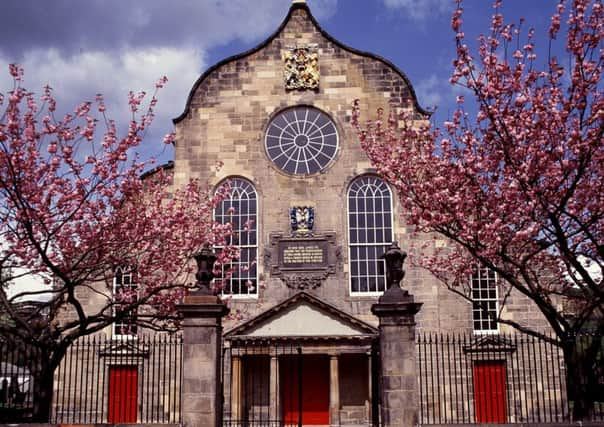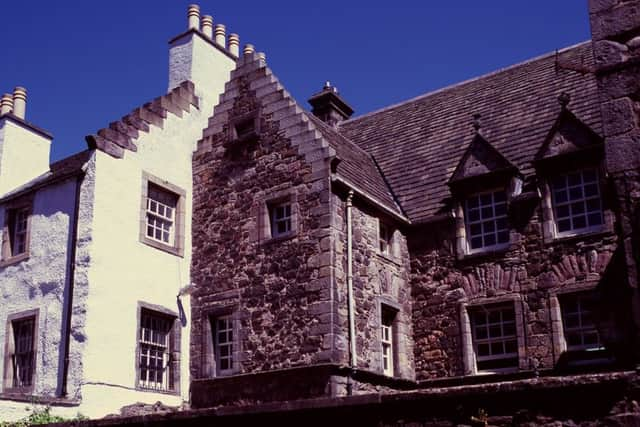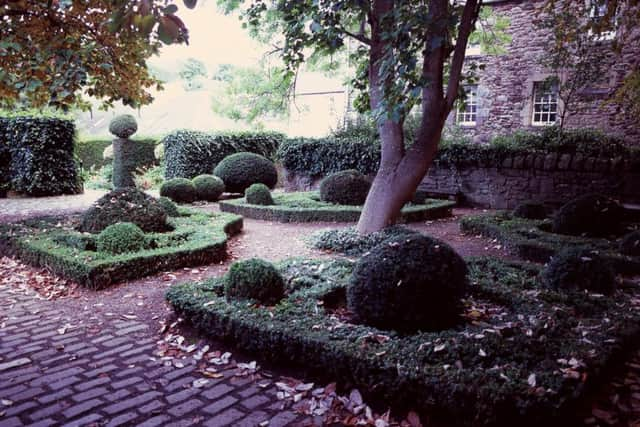Take a tour through Edinburgh's historic Old Town


The Old Town is a source of wonder. The majestic Royal Mile, the world-renowned buildings, the medieval closes evoking a bygone age. Distinguished visitors agreed.
Queen Victoria thought the view ‘quite enchanting’, while Charlotte Bronte considered London prose but Edinburgh poetry, describing it as ‘mine own romantic town’. Scots were equally complimentary: Burns adored his ‘darling Edina’ while Robert Louis Stevenson was moved to the heights of eloquence by his native city, calling it, ‘This profusion of eccentricities, this dream in masonry and living rock.’
Advertisement
Hide AdThen there is the history. What happened in the Old Town shaped Scotland: the signing of the National Covenant in 1638; the abolition of the Scottish parliament in 1707; the triumphal entry of Bonnie Prince Charlie at the head of a Jacobite army; the creation of the intellectual powerhouse that was the Scottish Enlightenment. The list is endless.


Little wonder that the Old Town has been designated a World Heritage Site by UNESCO and that more than four million visitors arrive in Edinburgh every year. Yet the Old Town is much more than a museum piece; it is the beating heart of Scotland’s capital. People walk the same streets as their ancestors, admiring the architecture, perhaps taking a short cut through a medieval close, providing them with evidence that for all its elegance our city must also have been cramped and claustrophobic, filthy and plague-ridden.
History inspires me. After studying the subject at Edinburgh University – an important Old Town institution – I became a tour guide, a job I have done for the last 15 years. I tell the people I guide about Edinburgh Castle, St Giles Cathedral and Holyrood Palace; no tour would be complete without them. But I also venture off the beaten track, to places even locals don’t know about. These unjustly overlooked spots are often the most revealing, helping us to understand what life was like centuries ago.
There are ten fascinating walks in this book and I am loath to pick a favourite. But if you pressed me it would be Walk 6, ‘The Top of Canongate’. Fewer folk know the area and there is a bit of everything that makes the Old Town what it is.
I start at Canongate Kirk. The church building, of 1688, is an unusual mix: Dutch-style gable and Roman Doric portico, but somehow it works, while the kirkyard is a treasure trove for those of us with a love of Scottish history. Many are the great and the good who have lived and died in Edinburgh, but there is still something special about seeing Adam Smith’s grave or noticing how Agnes Craig’s resting place is adorned with a bronze relief and the name ‘Clarinda’, the pet name Robert Burns gave her, showing that regardless of what she did in life, it is through her admirer’s words that she is remembered. Note also the graves of the man often referred to as Edinburgh’s poet, the tragic Robert Fergusson, dead at 24, and that of David Rizzio, musician and secretary to Mary, Queen of Scots and so brutally murdered in Holyrood Palace.


Next are the gardens of Dunbar’s Close, which I love. Like many of Edinburgh’s green spaces they are an oasis of peace, despite being only yards from the hubbub of the city’s most popular tourist street. The gardens were created back in the 1970s but there are still many Edinburgh residents unaware of their existence. If you want to get away from it all, Dunbar’s Close should be on your list.
Advertisement
Hide AdThe other side of Canongate has seen much redevelopment. The Scottish Parliament, of course, has had a huge impact, as have the new buildings between Canongate and Holyrood Road. It is hard to believe but not so long ago this area was undeveloped, apart from a brewery or two. Most of Holyrood Road was flanked by farmland and an open sewer would have greeted travellers a couple of centuries ago.
The walk continues in a westerly direction along Holyrood Road and to the site of one of the most historically controversial buildings in Edinburgh. In the grounds of Moray House there is an old summer house, in which, it is said, the 1707 Act of Union was signed. Moray House was owned by the Earl of Seafield, lord chancellor of Scotland, a key proponent of union with England. The story goes that because of a fear of violent disorder, the Act was signed, out of sight, in his summer house. Apocryphal? Probably. But an indication nonetheless of how ordinary people felt about the so-called ‘parcel o’ rogues’ behind the union.
Advertisement
Hide AdFrom Holyrood Road I meander back to the Royal Mile, follow Canongate a little and then divert away from it again into Chessel’s Court. The grand building that dominates the court is a wonderful 18th-century, mansion-style tenement that catered for the Edinburgh elite. However, a building in Chessel’s Court that is no longer with us, the government excise office, reminds us of one of Edinburgh’s most notorious criminals: Deacon William Brodie. It was here, in March 1788, that his luck finally ran out. During an audacious, but foolhardy, raid on the excise office Brodie and his gang were disturbed and, in a panic, fled the scene having stolen just £16. When one of his gang betrayed him to the authorities, Brodie’s fate was sealed. He was tried, sentenced and hung at the old Tolbooth in High Street, his execution witnessed by a huge crowd.
The highly distinctive Old Moray House, of 1625, with its twin pyramids on either side of the front gate, and a balcony overlooking Canongate, is a highlight of this walk. It was from this balcony that a prisoner, James Graham, Marquis of Montrose, was ritually to be abused by his enemies, among them the Duke of Argyll. However, Montrose, one of Scotland’s most romantic heroes, so impressed onlookers with his dignity and noble demeanour that they fell silent. Montrose was executed shortly thereafter at the Mercat Cross on High Street, his courage evident to all those who witnessed the grim scene.
On the same side of Canongate as Moray House, we find Bakehouse Close, one of the best-preserved closes in the Old Town. It also provides a view of two very important buildings: the 16th-century Huntly House, now part of the Museum of Edinburgh; and Acheson House, built for Sir Archibald Acheson, Charles I’s secretary of state for Scotland. Acheson House is one of the Old Town’s most notable structures, with fascinating carvings representing the Acheson family above the front door.
Finally, we end at the Tolbooth, which served as a prison and as a chamber for Canongate Burgh Council. Today it houses the People’s Story Museum, which details working-class life in Edinburgh from the 18th century to the present day and reminds us that grand mansions are all well and good but do not convey what life was like for ordinary people.
This has been a whistle-stop tour of Canongate. I have barely scratched the surface. Do the walk yourself, taking your time. Go down every close, admire the historic buildings, read all the plaques, inspect every gravestone. It is worth every minute of your valuable time.
10 Walks in the Historic Old Town: Edinburgh by Euan MacInnes is out now, published by Fort Publishing at £12.99